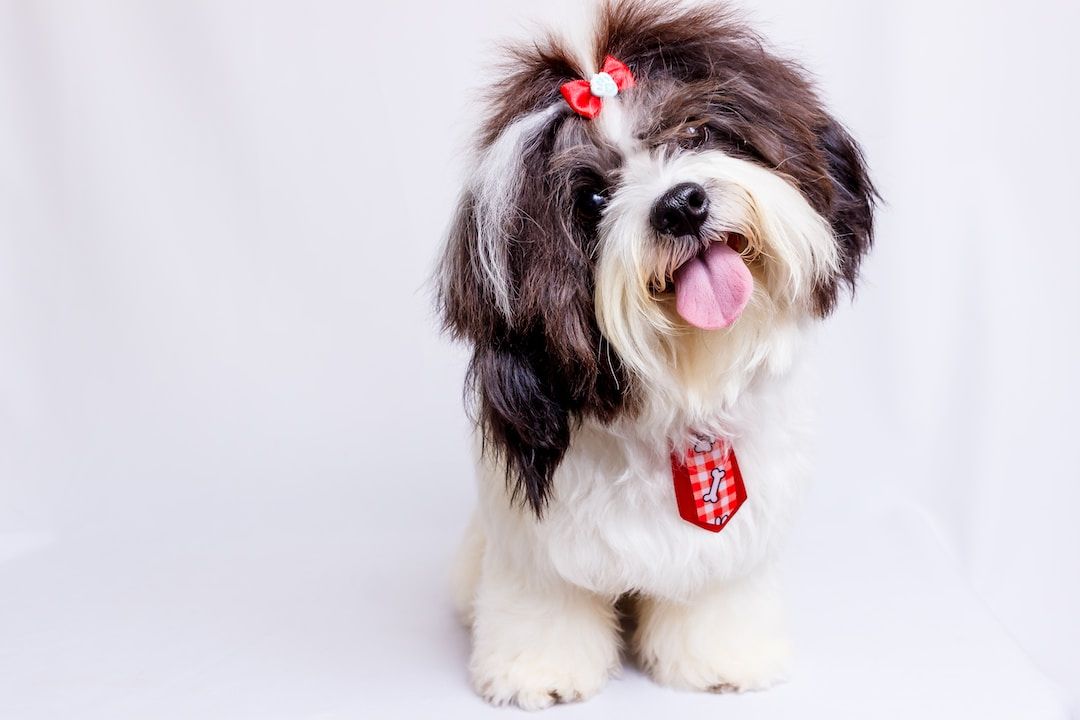Preventing and removing knots and tangles from your dog's coat.


Slicker brush

Metal comb

Detangle spray

Coat King
The video below is excellent for demonstrating how to remove knots from your dog's coat.
Picture this; the grass is soaking wet, covered in soggy leaves and that huge muddy puddle is far too enticing for a dog to resist; he/she has also rolled in a pile of fox poo, just for good measure! As a result, the dog is covered in knots and tangles.
The dog owner would like a nice and fluffy teddy bear trim. This seems like a reasonable request, right? A professional groomer should be able to do this no problem, shouldn’t they? Not exactly.
Rule of thumb is, if you cannot remove knots from the dog’s coat yourself at home using the correct equipment and techniques (I will discuss these in further detail below) then the chances are the groomer will not be able to either. Yes, we can apply deep conditioning treatments which may help, but once a knot has grown too close to the dog’s skin there is no amount of deep conditioning treatments that can help.
You must be realistic.
When requesting a dog’s hairstyle ask yourself the following questions:
Do I have the time to keep up with the DAILY brushing? Yes, I said DAILY. Especially if the dog has an easily knotted coat such as that of Bichons, Cockapoos, Labradoodles etc. and goes on regular walks or wears jackets and harnesses.
Am I committed to keeping the dog’s coat in tip top condition? You cannot be lazy when it comes to maintaining the coat for this type of style. Not only does the coat need to be brushed daily, the correct techniques and tools must be used (I will discuss in more detail later), which can be time consuming.
Does my dog have the correct temperament? Some dogs hate being brushed and groomed, and you just have to accept that unfortunately they will never look like a dog from Crufts.
Can I afford to have my dog groomed every four to six weeks? This is how often a dog needs to be professionally groomed in order to maintain a longer style.
If the answer is NO to any of these questions, then you must be realistic with the style you request.
If your answer is YES to all the above, I applaud your commitment and would like to thank you, it is not very often that a groomer gets the opportunity to showcase their skills and create an interesting and personalised style.
Firstly, I am going to show you the tools that are required; these can all be found at the likes of Amazon, Ebay and Pets at Home.
The Tools
Slicker Brush
Slicker Brush
Comb
Detangle Spray
Coat King
Technique
For preventing matting follow steps 1 to 5. To remove existing matts and tangles follow all 10 steps.
Step 1
Check the dog’s coat for any knots and tangles using the metal comb, parting the fur and getting right to the skin.
Step 2
All areas of the coat should be thoroughly checked. Pay special attention to the problem areas where your dog tends to get matted, your groomer will have told you where these are!
Step 3
Once you have identified the knots and tangles you can then spray detangling spray to that area, following the instructions on the bottle.
Step 4
Once the spray has been worked into the coat you can then begin using the slicker brush
Step 5
Part the fur and work the slicker brush through the fur in different directions as close to the skin as possible; be careful not to make contact with the skin as this may cause slicker burn.
Step 6
Once the slicker brush has loosened the knots the coat king can be used to break through them further. Holding the fur to the skin to prevent pulling and discomfort to the dog, work the coat king from behind the knot.
Step 7
Once you think the knots have been removed, check through the coat again thoroughly using the metal comb.
Step 8
After this, if there are still knots and matts remaining in the fur which cannot be removed using the above tools and techniques, then it may be time to accept defeat, get the coat clipped and start again.
Step 9
Once the fur has started to grow back you can then begin keeping on top of the coat and preventing any knotting in the future. Prevention is better than cure!
Step 10
Remember, the dog’s welfare comes first. Is it worth putting your dog through pain and discomfort in order to achieve the “perfect” style? The answer is NO!

